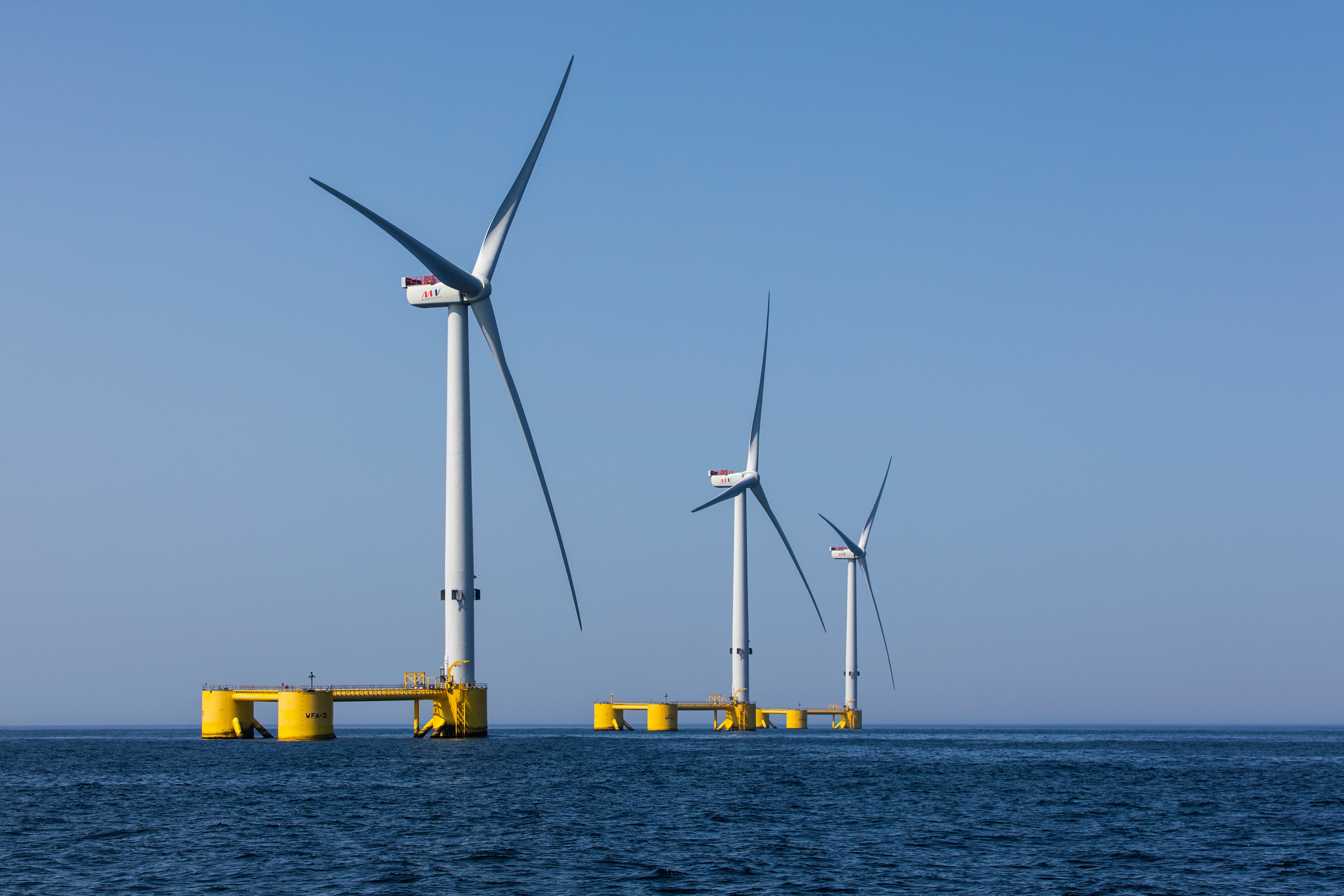
CLIMATEWIRE | The Biden administration announced initiatives yesterday to prepare states for floating offshore wind — a young but fast-emerging type of power that some say could revolutionize renewables on the West Coast.
The plans from the White House, Department of Energy and other federal agencies include a 20-month study on how to build out transmission networks that would link the West Coast’s grid to first-of-their-kind floating wind projects. That study — led by DOE — would be funded by $100 million from the Inflation Reduction Act, federal officials said. The Pacific Northwest National Laboratory also released a major report assessing how to build transmission for floating offshore wind on the West Coast, where deep waters make traditional offshore wind prohibitive.
“We are positioning ourselves not just to catch up and seize the lead, but really to forge the frontier of a new technology,” said Ali Zaidi, national climate adviser, during a summit on floating wind that was convened by DOE as well as the Interior, Commerce and Transportation departments.
DOE also announced that California, which has the biggest state-level goals for floating wind, would be the first West Coast member of the seven-state National Offshore Wind Research and Development Consortium, which carries out department-funded research into challenges for offshore wind. The state’s presence in the consortium will infuse it with a new focus on floating technologies, particularly ways of slashing their costs, according to DOE.
Separately, California said it was joining another Biden-backed initiative known as the Federal-State Offshore Wind Implementation Partnership, which consists of federal agencies and state officials and is aiming to encourage manufacturing and workforce training for future offshore wind projects, including floating technologies. California and Louisiana, which also joined the partnership yesterday, bring the total number of state members to 13.
The administration’s moves on floating wind came alongside others focused on traditional offshore wind.
Interior said it would hold the first-ever sale of offshore wind leases in the Gulf of Mexico, estimating that it could result in enough energy to power 1.3 million households (Greenwire, Feb. 22).
DOE added it would develop a road map for offshore wind projects’ operations and maintenance, with Sandia National Laboratories and the National Renewable Energy Laboratory. The road map will identify knowledge gaps and technology solutions, it said.
Floating turbines, which rest on a platform lashed to the deep sea bottom, are of interest as an alternative to conventional offshore wind turbines, which have foundations buried directly into the seabed.
Experts say there are various advantages to floating designs.
Two-thirds of U.S. offshore wind resources are located in deepwater areas, where conventional turbines aren’t an option, according to DOE. That includes not just California but virtually the entire West Coast, where water depths start to plunge not far from shore.
But no floating wind projects currently exist in the United States, in large part because they would be much more expensive to build.
Europe and Asia are eyeing new projects, though. Last year, the global pipeline of new projects ballooned more than 70 percent to 104 gigawatts, according to the National Renewable Energy Laboratory. That amount is roughly equal to the size of America’s solar industry as of two years ago.
On the East Coast, where turbines are already rising in shallow waters, some governors say that a second generation of floating projects could take advantage of stronger winds far out of sight from shore — a factor that might help avoid opposition from coastal towns.
High costs, lack of coordination
The state plans dovetail with the Biden administration. Last September, DOE said it wants to cut the cost of floating offshore wind power by 70 percent by 2035 — a goal known as its Floating Offshore Wind Shot (E&E News PM, Sept. 15, 2022).
The floating offshore wind target is intended to address multiple challenges holding back the technology.
Ports need to be redeveloped into staging grounds, construction vessels need to be built and U.S.-based factories need to be created to supply floating turbines’ parts, among other things, said Jocelyn Brown-Saraceno, offshore wind lead at DOE’s Wind Energy Technology Office, during the virtual summit.
Another central problem for floating wind — how to bring ashore the turbines’ power — was examined in the Pacific Northwest National Laboratory report, which identified gaps in federal scientists’ knowledge about how offshore wind transmission might be constructed on the West Coast.
Underwater transmission cables might have to extend up to 65 miles from shore, yet few viable routes have been defined as of yet, PNNL said. Coordination among West Coast states has not been prioritized, although it could be “vital” for transmission, the report said. More work needs to be done to validate floating wind’s generation profiles and economics. And local impacts, including concerns from other ocean users, need to be incorporated into cost-benefit analyses, concluded the authors.
Despite the challenges, Energy Secretary Jennifer Granholm called floating offshore wind “one of the most promising clean energy technologies for the 21st century” at the summit, adding it would enable the country’s movement toward 100 percent carbon-free electricity by 2035.
“Friday is going to mark year one since Putin invaded Ukraine, and that has shown the world that we have got to build a global energy system that can never again be manipulated by one leader, one autocrat or even one country,” she said.
Reporter Anne C. Mulkern contributed.
This story also appears in Energywire.
Reprinted from E&E News with permission from POLITICO, LLC. Copyright 2023. E&E News provides essential news for energy and environment professionals.
